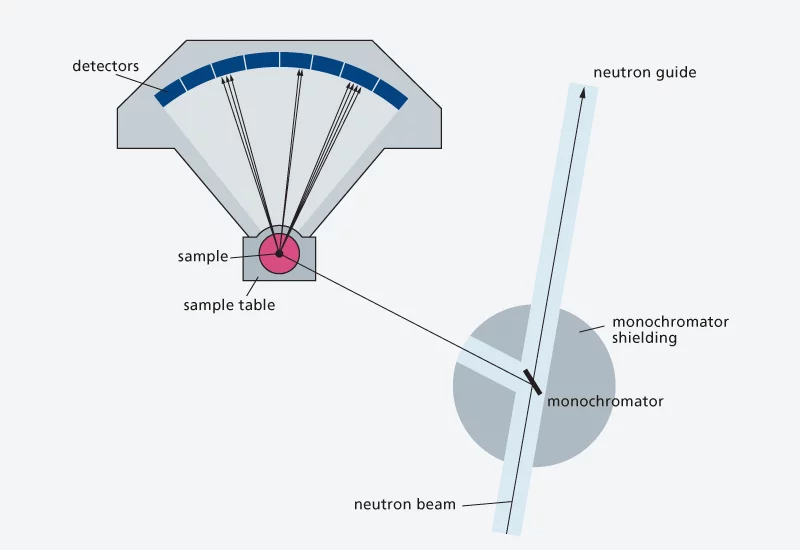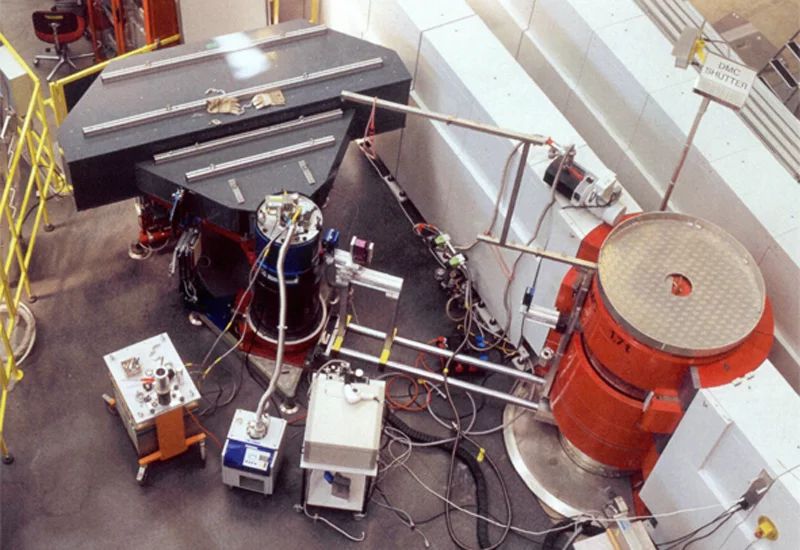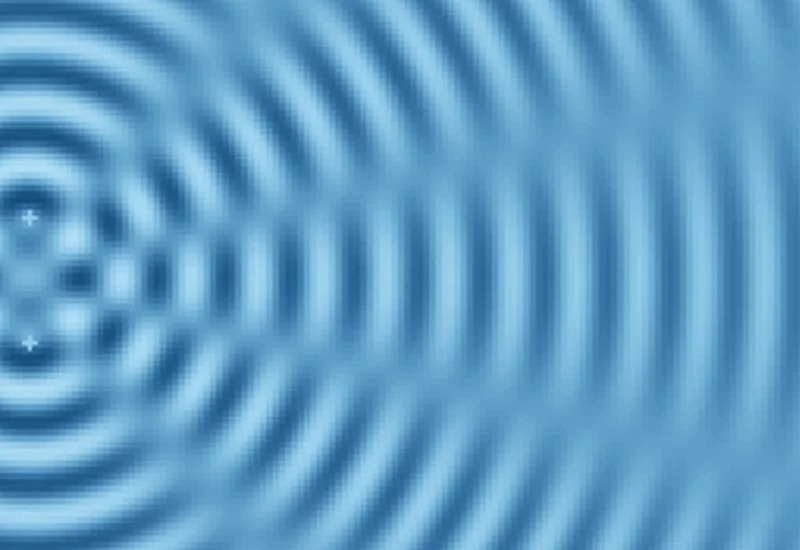Overview article
Experimenting with neutrons
In this experiment, a material with the chemical formula Nd3Pd20Ge6 was investigated. In the image, only the magnetic neodymium (Nd) atoms are visible.
Most neutron experiments follow a common idea: a beam of neutrons is directed towards the object of investigation – the sample. The beam changes on its way through the sample, with some neutrons altering their direction of flight, or their speed, or even being completely absorbed in the sample. These changes to the beam are monitored by neutron detectors and can be used by researchers to draw conclusions about structures and processes within the sample. The details of the individual experiments depend on the problem set for the research project, and on the samples to be investigated.
Two kinds of experiments
allow different insights into the structure of materials
There are about 15 positions for different experiments with neutrons at PSI. They all belong to one of two basic types of neutron experiments operated at PSI. Scattering experiments provide information about a sample on the atomic level: they show the spacial arrangements of the atoms, their motion or the detailed magnetic structure of the material. Neutron imaging provides images of the interior of a large variety of objects such as technical components or works of art. The objects investigated remain unharmed during the experiment.
On this page: more information on
Neutrons show how atoms are arranged
the simplest neutron experiment
The most basic example of a neutron scattering experiment is the determination of the structure of a crystal– i.e. the spatial arrangement of the atoms – of a substance available in the form of a powder made of small crystals. The term crystal
refers to a material in which the internal atoms are arranged in a regular structure.
If a beam of neutrons is directed towards this powder, most of the neutrons simply pass straight ahead through the sample. However, some will be deflected to a lesser or greater degree from their original path – and at very specific angles. These angles in the scattered neutron path can be used to determine the distances between the atomic layers – and, in fact, the scattering angle increases with reduction in the inter-atomic distance. Neutron scattering can thus be used to translate very small dimensions (inter-atomic distances) into those that are easy to measure (deflection angles).
In this type of experiment, researchers also have to bear in mind that the deflection angle not only depends on the structure of the sample, but also on the velocity (or wavelength) of the neutrons being used. Only those neutrons arriving from the beam with a specified velocity can therefore be selected for the experiment. This is achieved by using a monochromator, which is itself usually a crystal, and also uses the fact that a crystal deflects neutrons arriving at different velocities in different directions.
Neutron scattering is possible because neutrons, like all other elementary particles, behave like waves as well as like particles. Their wave characteristics can overlap, and weaken or strengthen each other. The scattering pattern is therefore produced by a similar principle to the pattern produced on a water surface when two stones have been thrown into the water at the same time.
Even if the neutron scattering instruments used to answer the various questions are different from each other in their construction, they all follow the principle described here. However, the instruments used for imaging procedures work using a fundamentally different process.
Creating images with neutrons
imaging techniques
The imaging techniques using neutrons provide images of the interior of a large variety of objects and thus resemble the technique used to produce medical X-ray images the main difference being that neutrons are used instead of X-ray radiation.
The answer to the question whether to use neutrons or X-rays in a particular experiment depends strongly on the materials the object under investigation is made of. For example, neutron show water or organic material behind a thick layer of metal because a neutron beam can pass almost unchanged through metal but is deflected by hydrogen atoms. This property can be used to visualise the inner structure of a combustion engine or the water flow in a fuel cell. An example for the application of neutron imaging for studies of cultural heritage is the investigation of a Tibetian Buddha statue made of brass. In this case, the neutron image clearly showed that the statue contained pieces of wood and dry flowers. The statue remained unharmed during the investigation. Looking into the statues would not have been possible had X-rays been used instead of neutrons.
Additional Information
- Spallation Source SINQ
Producing neutrons at PSI - Properties of Neutrons
Why use neutrons for research? - Research using muons and synchrotron light
Experiments with these probes often complement investigations with neutrons. - Neutron Instrumentation
Detailed description of PSI's neutron research opportunities




